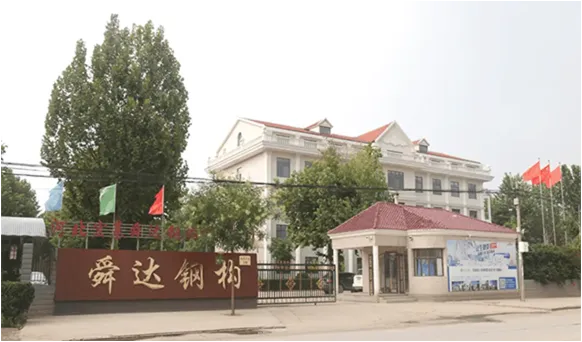- Afrikaans
- Albanian
- Amharic
- Arabic
- Armenian
- Azerbaijani
- Basque
- Belarusian
- Bengali
- Bosnian
- Bulgarian
- Catalan
- Cebuano
- Corsican
- Croatian
- Czech
- Danish
- Dutch
- English
- Esperanto
- Estonian
- Finnish
- French
- Frisian
- Galician
- Georgian
- German
- Greek
- Gujarati
- Haitian Creole
- hausa
- hawaiian
- Hebrew
- Hindi
- Miao
- Hungarian
- Icelandic
- igbo
- Indonesian
- irish
- Italian
- Japanese
- Javanese
- Kannada
- kazakh
- Khmer
- Rwandese
- Korean
- Kurdish
- Kyrgyz
- Lao
- Latin
- Latvian
- Lithuanian
- Luxembourgish
- Macedonian
- Malgashi
- Malay
- Malayalam
- Maltese
- Maori
- Marathi
- Mongolian
- Myanmar
- Nepali
- Norwegian
- Norwegian
- Occitan
- Pashto
- Persian
- Polish
- Portuguese
- Punjabi
- Romanian
- Russian
- Samoan
- Scottish Gaelic
- Serbian
- Sesotho
- Shona
- Sindhi
- Sinhala
- Slovak
- Slovenian
- Somali
- Spanish
- Sundanese
- Swahili
- Swedish
- Tagalog
- Tajik
- Tamil
- Tatar
- Telugu
- Thai
- Turkish
- Turkmen
- Ukrainian
- Urdu
- Uighur
- Uzbek
- Vietnamese
- Welsh
- Bantu
- Yiddish
- Yoruba
- Zulu
Oct . 15, 2024 05:45 Back to list
The Evolution of Industrial Building Construction
Industrial building construction has witnessed significant transformations over the years, driven by advancements in technology, changes in economic structures, and evolving environmental considerations. As the backbone of the manufacturing and production sectors, the construction of industrial buildings plays a crucial role in supporting infrastructure development and economic growth.
Historical Context
Historically, industrial buildings began as simple structures designed for functionality. During the Industrial Revolution, factories emerged as vital components for mass production, characterized by their large open spaces, high ceilings, and proximity to transportation networks. These early industrial buildings were often constructed using local materials and followed basic architectural designs that prioritized utility over aesthetics.
As industries expanded, so did the complexity of their structures. The late 19th and early 20th centuries saw the introduction of steel frames, which allowed for larger spans and more intricate designs. This innovation not only facilitated the construction of taller buildings but also led to the development of iconic structures that defined industrial landscapes, such as warehouses and assembly plants.
Modern Trends in Industrial Construction
In recent decades, industrial building construction has evolved substantially. Factors influencing this evolution include globalization, technological advancement, and a heightened awareness of sustainability. Modern industrial buildings are now designed to accommodate advanced manufacturing processes, automation, and smart technologies.
One prominent trend is the adoption of modular construction techniques. This method involves prefabricating sections of a building off-site and then assembling them on location. Modular construction not only reduces construction time but also minimizes waste, making it an economical and environmentally friendly option. Additionally, technologies such as 3D printing and Building Information Modeling (BIM) are increasingly being used to enhance design precision and streamline project management.
industrial building construction

Sustainable Construction Practices
Sustainability has become a significant consideration in industrial building construction. As businesses recognize their environmental impact, there is a growing emphasis on creating greener structures. This includes the use of sustainable materials, energy-efficient systems, and designs that minimize ecological footprints. Industrial buildings are now often equipped with solar panels, green roofs, and advanced insulation to reduce energy consumption and promote sustainability.
Furthermore, organizations are increasingly seeking LEED (Leadership in Energy and Environmental Design) certification for their facilities. This certification not only signifies compliance with high environmental standards but also can lead to substantial cost savings in energy bills and operational efficiency. The push for sustainable industrial buildings reflects a broader societal shift towards environmental responsibility and corporate social accountability.
Economic and Social Impacts
The construction of industrial buildings does not merely contribute to economic output; it also has significant social implications. These structures often create jobs, both during the construction phase and in their operational life. By providing spaces for manufacturing and distribution, they contribute to local economic development, often revitalizing industrial zones and creating employment opportunities.
Moreover, modern industrial buildings are increasingly designed with employee well-being in mind. Features such as natural lighting, ergonomic workspaces, and communal areas are being integrated to enhance the work environment. This paradigm shift recognizes the importance of a positive workplace culture, which can lead to increased productivity and employee satisfaction.
Conclusion
In conclusion, the landscape of industrial building construction is continuously evolving, driven by technological innovations, sustainability goals, and societal demands. As industries adapt to the complexities of the modern economy, the design and construction of these facilities will embrace flexibility, efficiency, and environmental stewardship. The future of industrial buildings promises to be not only functional but also a pivotal element in fostering sustainable development and enhancing the quality of life within communities.
-
How Do Prefabricated Steel Structures Transform Modern Construction?
NewsJul.14,2025
-
How Do Prefabricated Metal Buildings Redefine Modern Construction?
NewsJul.14,2025
-
How Do Prefab Insulated Metal Buildings and Steel Structures Revolutionize Modern Construction?
NewsJul.14,2025
-
How Do Pre - Engineered Steel Structures Redefine Modern Construction?
NewsJul.14,2025
-
Advancing Modular Construction with Prefabricated Metal Structures
NewsJul.14,2025
-
Advancing Industrial Infrastructure with Prefabricated Steel Solutions
NewsJul.14,2025
Products categories
Our Latest News
We have a professional design team and an excellent production and construction team.












